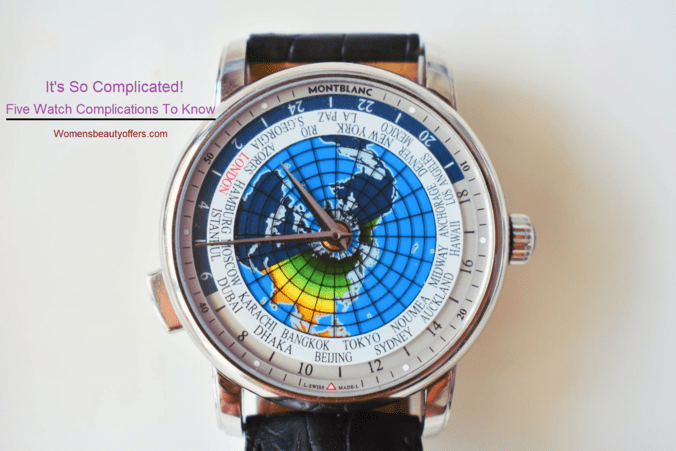Table of Contents
Have you ever wondered if there’s anything else that your watch or timepiece can do, aside from telling the time? Yes, smartwatches and even quartz-powered watches have developed various functions and capabilities in the past few decades (calculator function, video, radio, etc.) But what other functions can an old-school mechanical watch be capable of? If you are not a hardcore watch or timepiece enthusiast, you should know that the other watch functions I’m talking about are watch complications. The general definition of a watch complication is simply any function on a watch or timepiece that exists and does more than tell time (does more than display hours, minutes, and seconds).
The list below covers the five most common mechanical watch complications in history. However, “common” may be a loose term as most watch complications are generally reserved for more expensive watches and timepieces. Also, traditional horological technology is advancing, so there are more complications out there that we probably haven’t even heard of. Watch complications have not always been practical, and some have become less useful as time and technology go by. Nevertheless, watch complications continue captivating watch connoisseurs everywhere as they are examples of humankind’s ingenuity, skill, and exquisite craftsmanship.
5 Watch Complications To Know
1. Date Display or Date Window
Date displays or date windows are the simplest, most useful, and definitely most common watch functions available – as they can be found even on the most inexpensive watches and timepieces. True to their name, they display the date. However, the common date display complication has to be regularly adjusted because there are 31 date discs in a date display for 31 days. Therefore, the wearer must adjust the watch every November or February (whenever the month has less than 31 days). Others might find this an occasional charming ritual, some not so much. Additionally, the day-date display is a slightly more advanced version of the date display or window as it also tells the wearer the day of the week.
2. Chronograph
The best and simplest way to understand the chronograph function is to think of it as a stopwatch function. Its original purpose was to time races, and it is still used for that same purpose, but more people nowadays have just chosen to use the stopwatch and timer functions on their smartwatches and smartphones. The chronograph function is the most commonly encountered complication in high-end and lower-end watches. These are some of the types of chronographs you can find:
- The Mono-Poussier or one-button chronograph
- The fly-back chronograph
- The rattrapante (for split-second accuracy)
- The centigraphe (measures 1/100th second)
3. Greenwich Mean Time (GMT) or Dual Time
GMT or dual time zone complications are among the most popular and most utile in the world of watches and timepieces. Originally designed by Rolex, the GMT or dual time function is intended to track two time zones at once. Therefore, any watch or timepiece with a GMT function allows the wearer to view two separate time zones – both operated by a single watch movement. Some movements can be purchased online in stores like Watch & Style.
4. Moon Phase Indicator
Aesthetically appealing yet completely impractical, the moon phase indicator is now a barely used complication. And although it can serve as the focal design point of a watch dial, the moon phase complication usually takes a complementary role to other complications. The complication also indicates a full, half, quarter, or new moon in the sky above. Originally designed for sailors to determine the tides by way of the moon, it now serves little to no purpose on watches and timepieces despite its relative accuracy and reliability. Maybe it would be better to buy an astronomy app on a smartphone than buy a luxury watch with a moon phase complication for an arm and a leg. Nevertheless, this werewolf’s favorite complication remains a captivating aesthetic feature in the most premium dress watches.
5. World Time
First made for cosmopolitan pocket watches in the 1800s, the world time complication’s purpose was to display the time in major cities worldwide simultaneously. However, it took almost a century until it was redesigned to fit inside a wristwatch case. It has since become one of the quintessential complications used by global travelers. For example, international business executives who communicate with various global offices may find this complication useful. This complication is typically found in sports watches and features a rotating inner bezel with a 24-hour display inside an outer bezel that lists the major cities in each timezone.
Author’s Bio:
William Ross is often described as a jack of all trades. He loves to explore new things and cultivate his knowledge everywhere he goes. These days, he spends most of his free time writing about watches and watch accessories, as he is a collector himself.
See also – Perfect Watch For Gifting




